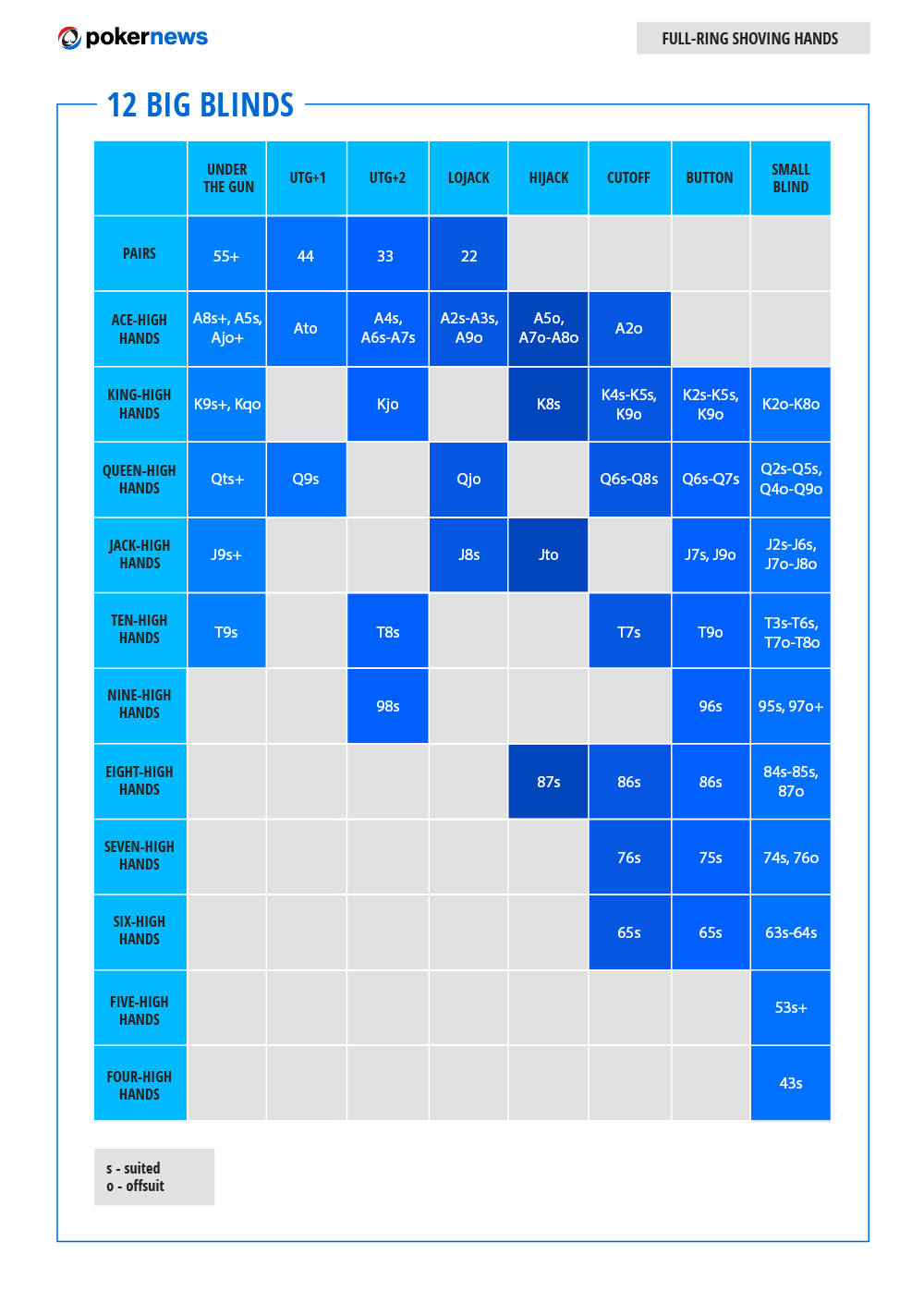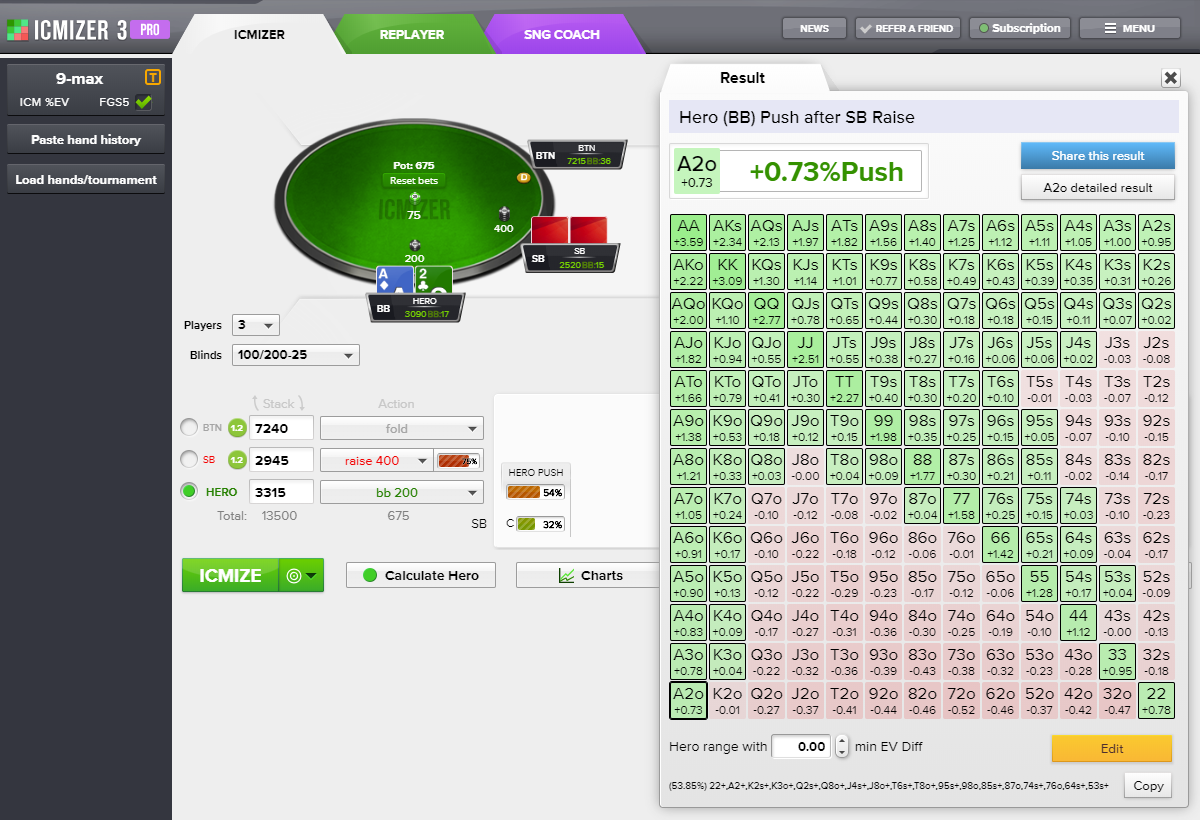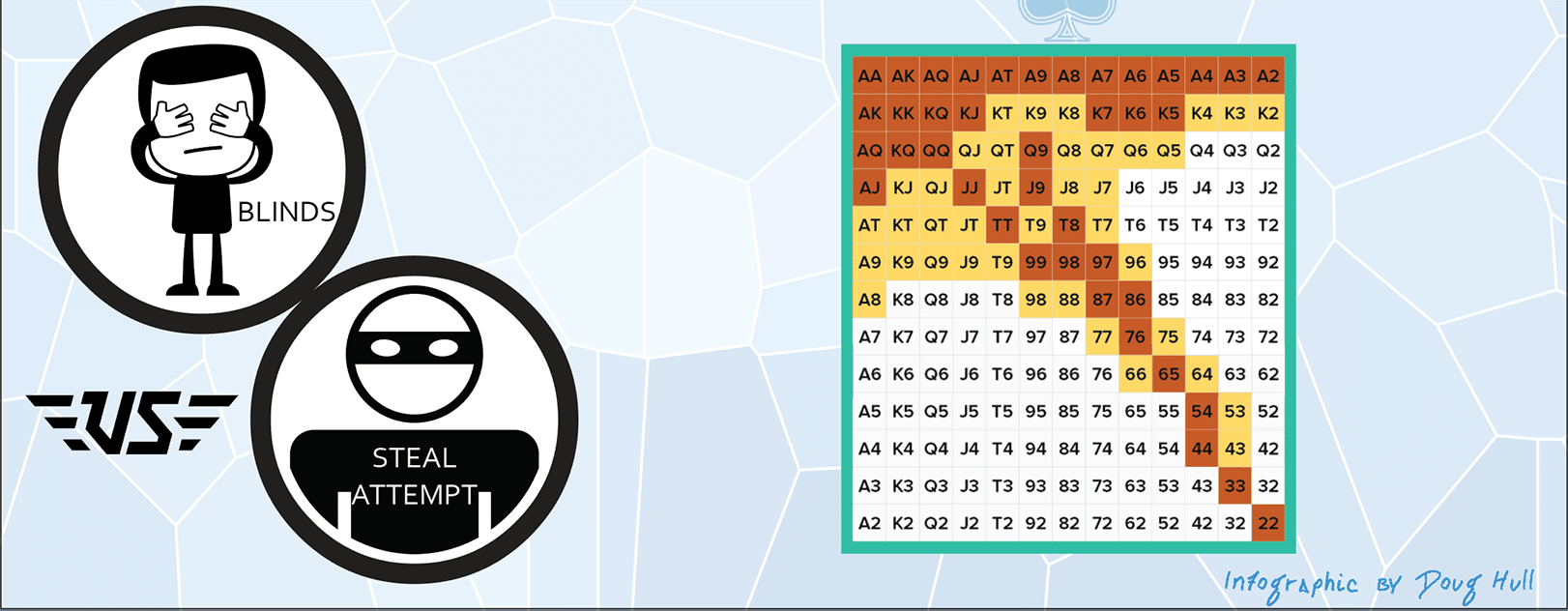Poker Blinds Chart
- Hold Em Poker Tournament
- Poker Blinds Chart Template
- Poker Blinds Chart Sheet
- Poker Blinds Chart
- Poker Blinds Chart Rows
- Poker Blinds Chart Length
- Poker Blinds Chart Templates
- Poker Blinds Chart Shades
The Texas Hold Em Poker Tournament Blinds will determine the length of time a particular poker tournament takes to complete. In addition, the poker tournament blind structure provides an important strategic consideration for the style of play best suited to the particular poker tournament.
We aim to cover both suggested blind structures for your Texas Hold Em Home Poker Tournament as well as strategic considerations that depend on these varying blind structures.
This way, you can set up your poker tournament to last the desired length of time you prefer and be armed with the best poker tournament strategy to win it!

Poker Blinds Chart: Names of Table Stakes. Below, you can find a chart of the most common stakes found between online and live, along with some remarks about them: NOTE: As aforementioned, the name of stake is representative of the $ amount for 100bb’s for that stake level. Understanding the Different Stakes. This means that a tournament with a starting stack of T2,000 should have starting blinds at 10/20 at least and 25/50 at most. Blind increases. Blind increases are usually 50-100% of the last blind and the blind intervals are usually 20-30 minutes. Near the end of a tournament the big blind should be no larger than 2-4% of the average stack.
It is important to ensure that before starting any poker tournament that the poker tournament blinds to be used are posted for all of the players to see.

This will include the various levels with increases shown clearly as well as the amount of time between levels.
Another consideration before selecting your Texas Hold Em Tournament Blinds is the length of time that you would like the poker tournament to run for. Do you plan on playing a six hour tournament that lasts all night? Or are you hosting a quick three hour tournament?
The best way to set up a tournament to fit the time available is by choosing the correct Texas Hold Em Tournament Blinds that will move play along as the desired pace.
Poker Blinds Chart Template
Here is our suggestion for Texas Hold Em Poker Blinds structures for a 10 player tournament based on desired length of play.
We recommend starting with $2,000 worth of chips for the below Texas Hold Em Tournament Blinds chart:
Level | Small Blind | Big Blind |
1 | 10 | 20 |
2 | 15 | 30 |
3 | 20 | 40 |
4 | 35 | 70 |
5 | 50 | 100 |
6 | 75 | 150 |
7 | 100 | 200 |
8 | 150 | 300 |
9 | 200 | 400 |
10 | 300 | 600 |
11 | 400 | 800 |
12 | 500 | 1000 |
13 | 750 | 1500 |
14 | 1000 | 2000 |
15 | 1500 | 3000 |
Time: 15 minute levels = 3 hours 30 minute levels = 6 hours | ||
This Texas Hold Em Poker Tournament Blinds structure is easy to print and should be shown before the tournament begins. It is also easy to adjust as you wish by simply changing the length of time for each blind level.
If you find it takes too long, or is too short, simply adjust the time between levels next time around until you have the perfect tournament for you and your friends!
The suggested poker tournament blind structure can be adjusted by changing the time of the levels depending on the number of players. For example, if you have 20 players instead of 10, then half the time for each blind level for the same desired tournament length.
If you have half the number of players – 5 players – then you can double the suggested time between blind levels to keep within the time limit. The chart is really easy to use and easy to adjust.
You may also find it useful to check out our page on Texas Hold Em Tournament Payout amounts as we provide charts that will make hosting your Texas Hold Em Home Poker Tournament hassle free.
Our site provides a lot of useful resources to help you plan your Texas Hold Em Home Poker Tournament so make sure that you take the time to look around.
Poker Blinds Chart Sheet
The Texas Hold Em Tournament Blinds also affect your strategy when playing and this is important if you plan to win the tournament. If you are playing the shorter version of the tournament, the blinds will begin to increase more rapidly.
Therefore you have less time to wait for big hands and will eventually be forced to play aggressively and take some chances in order to stay ahead of the blinds. You need to ensure that you do this before your stack becomes too short compared to the size of the blinds.
Alternatively, if your tournament uses the longer time between blinds, then you have more time to wait for a big hand and less pressure on you to take risks. If this is the case, you will want to play more conservatively as time is on your side.
It is very important to understand how the Texas Hold Em Poker Tournament Blinds affect the tournament structure and how you need to change your style of play depending on how quickly the blinds increase. This is the key to winning Texas Hold Em Poker Tournaments.
 Share This With Others:
Share This With Others:Return from Texas Hold Em Poker Tournament Blinds to The Texas Hold Em Poker Club
What are poker blinds ?
Based on the limit of the poker game the player to the left of the dealer’s button (small blind) and the player two to the left of the dealer (big blind) are required to place mandatory bets in the pot before cards are dealt (Small blind has to put half of the big blinds amount). These bets count toward the first round of betting. So if the pot is not raised pre-flop, small blind will only have to put half a bet to call and big blind has the option of raising or just checking.
Poker Blinds Chart
In a poker tournament, blinds go up gradually. This is to ensure that the tournament finishes on a timely manner. (the higher the blinds get the more players tend to get eliminated).
Blinds usually go up after predetermined periods of time. (for example every 15 or 20 minutes).
Two main factors determine blind structure of the game:
- Starting chip amount
- How long you want the tournament to last.
Poker Blinds Chart Rows
Poker Blind Structure Tips
- The first big blind should be 1/50 of the starting chip amount. (or the starting chip amount should be 50 times the starting big blind). So if everyone starts with 1000 in chips the first big blind should be 10/20.
- Blind period is the time each blind lasts:
- Typical tournament blind periods are 10, 15, 20, 30, or 60 minutes.
- Blinds period should be the same for every blind.
- The faster the blind period is the faster the tournament ends and the more luck involves. So it’s a good idea to have slightly longer blind periods at your house game. 15 or 20 minute blind periods are good choices. Blinds in online websites tend to go up faster. This is because online poker action is much faster than live poker.
- Blinds typically double after each round. If the first big blind is 10/20, the next one should be 20/40.
Calculate Blind Structure
Follow these simple steps to create blind structure that best fits your game:
- Decide your starting chip amount.
- Divide it by 50. This should be your first big blind.
- Make your final big blind (when the tournament should finish) equal to your starting chip amount.
- Arrange the middle level blinds so that they gradually increase from your first big blind to the last one. It is best to keep the first couple blind periods low.
- Add the period (times) together. If it seems too long takes couple levels off the chart, and if it seems short add couple level to the chart.
Poker Blinds Chart Length
Sample Tournament Blind Structure Chart
Poker Blinds Chart Templates
Following is a chart of recommended blind structures based on different starting chip stacks :
Poker Blinds Chart Shades
| Blind Period | Chip Stack | |||
| 100 | 1000 | 2500 | 5000 | |
| 1 | 1/2 | 10/20 | 25/50 | 50/100 |
| 2 | 2/4 | 20/40 | 50/100 | 100/200 |
| 3 | 3/6 | 30/60 | 75/150 | 150/300 |
| 4 | 5/10 | 50/100 | 100/200 | 200/400 |
| 5 | 10/20 | 75/150 | 200/400 | 300/600 |
| 6 | 15/30 | 100/200 | 300/600 | 500/1000 |
| 7 | 25/50 | 150/300 | 500/1000 | 750/1500 |
| 8 | 50/100 | 200/400 | 750/1500 | 1000/2000 |
| 9 | 75/150 | 300/600 | 1000/2000 | 1500/3000 |
| 10 | 100/200 | 400/800 | 1500/3000 | 2000/4000 |
| 11 | 150/300 | 500/1000 | 2000/4000 | 3000/6000 |
| 12 | 200/400 | 1000/2000 | 2500/5000 | 5000/10000 |